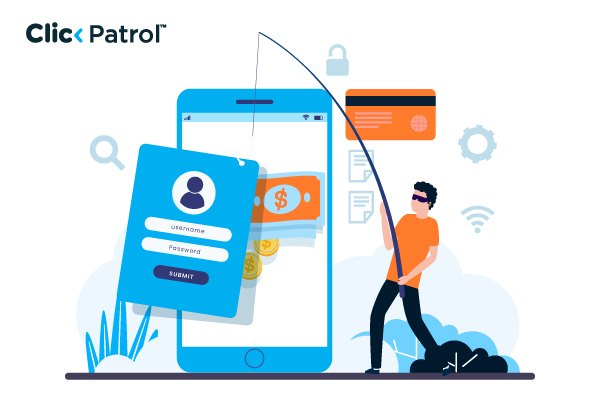Click fraud, in which bots or click farms automatically create fake clicks on advertisements to waste advertiser funds or inflate the earnings of publishers, is the most prevalent form of ad fraud.
Ad fraud techniques in 2025: Complete guide with real examples and prevention strategies
Abisola Tanzako | Oct 15, 2025

Table of Contents
- Ad fraud techniques in digital advertising: Definition and risks
- How Ad fraud affects consumers
- Top 10 Ad fraud techniques explained
- Ad fraud case studies: Methbot, 3ve, and beyond
- Best Ad fraud detection tools in 2025
- Step-by-step guide to preventing Ad fraud
- How brands can fight Ad fraud and protect their budgets
The digital advertising market is massive, with predictions that it will surpass $600 billion worldwide by 2024. Online ads help brands drive awareness, clicks, and conversions through banners, search, or video placements.
But wherever money flows, fraudsters follow. Ad fraud has become one of the most lucrative forms of cybercrime, stealing billions of dollars each year through bots, spoof sites, and other tactics that drain ad spend while offering little value.
This threatens trust and effectiveness for marketers, publishers, and consumers. In this article, you will learn the top ad fraud techniques in 2025, real-world case studies like Methbot and 3ve, the best detection tools, and practical strategies to protect your ad budget.
Ad fraud techniques in digital advertising: Definition and risks
Ad fraud refers to any deliberate action that generates fake interactions with online advertisements. Fraudsters utilize software or deceptive tactics to generate false clicks, views, or conversions, thereby tricking advertisers into paying for worthless traffic.
Unlike spam or phishing, it is not always obvious that campaign dashboards may show high clicks or views, as many come from bots or fake sites, rather than real customers.
How Ad fraud affects consumers
Consumers are not immune. Fraud leads to:
- Companies are increasing product expenses and passing on unnecessary costs to consumers.
- Security threats, as malware and malicious advertisements, have the potential to infect user computers.
- Poor user experience, in the form of irrelevant or obtrusive advertising on valid sites.
Top 10 Ad fraud techniques explained
Top 10 Ad fraud techniques include:
- Click fraud: Bots or click farms generate fake clicks to waste ad budgets or boost publisher earnings.
- Impression fraud: Fake ad views via ad stacking (multiple ads hidden under one) or pixel stuffing (1×1 invisible ads).
- Bot traffic: Automated programs mimic human actions, such as scrolling or filling forms, making fake traffic look real.
- Domain spoofing: Fraudsters pose as premium sites (e.g., The New York Times) to sell low-quality inventory at inflated prices.
- Ad injection: Malware or extensions insert ads on legitimate sites without the publisher’s consent.
- Video Ad fraud: Hidden or looping video ads rack up fake views, targeting high-paying video CPMs.
- Affiliate fraud: Cookie stuffing, fake leads, or fake app installs trick affiliate programs into paying commissions.
- Mobile Ad fraud encompasses click injection, SDK spoofing, and device farms, which create fake app installs and engagement.
- Location fraud: GPS spoofing fakes user locations, misleading advertisers targeting local audiences.
- Conversion fraud: Fake sign-ups, sales, or trials trick advertisers in pay-per-lead campaigns.
Ad fraud case studies: Methbot, 3ve, and beyond
Methbot: The $3M a day Ad fraud scam
- Technique: Domain spoofing and spoofing video advertisement.
- Scale: Projected 3-5million stolen daily in the year 2016.
- Result: Whistleblown by White Ops; it is rated as one of the most significant ad fraud cases.
3ve Botnet: 1.7M computers hijacked
- Process: Botnet by leveraging hacked devices by imitating clicks, domains, and traffic.
- Size: 1.7 million PCs, tens of millions of dollars stolen.
- Result: FBI, Google, and international law enforcement dismantled it in 2018.
Best Ad fraud detection tools in 2025
The best Ad fraud detection tools in 2025 include:
- ClickPatrol: Monitors traffic patterns. Blocks invalid clicks and protects advertisers from click fraud and budget loss.
- Moat Analytics: It focuses on measuring ad viewability and authentic engagement.
- Fraudlogix: Gives programmatic traffic monitoring to detect and block fake inventory.
- DoubleVerify and Integral Ad Science (IAS): Verify impressions, traffic sources, and fraud indicators to ensure advertisements are displayed in front of actual users.
Step-by-step guide to preventing Ad fraud
The step-by-step guide to preventing Ad fraud includes:
- Check your Ad partners: Know exactly which websites, apps, or platforms your ads run on. Work only with trusted partners.
- Buy from verified sellers: Use ads.txt or other verification tools to ensure you are purchasing ads from legitimate sources.
- Filter fake traffic early: Set up tools that block bots and suspicious clicks before your ad money is spent.
- Use independent checkers: Hire third-party tools (like IAS or DoubleVerify) to double-check where your ads appear and if they are real.
- Turn on platform protections: Most ad platforms (like Google Ads) have built-in fraud detection; make sure it is active.
- Watch your numbers closely: Track clicks, views, and locations daily. Sudden spikes or odd patterns may signal fraud.
- Block known fraud sources: Keep lists of suspicious IPs or bot networks and block them from accessing your ads.
- Verify conversions: Double-check that sign-ups, purchases, or app installs are real people, not bots.
- Secure your landing pages: Add bot checks (like CAPTCHA) and simple traps to catch fake visitors.
- Control ad placements: Avoid hidden ads or low-quality sites. Use caps to limit how often one person sees the same ad.
- Put rules in contracts: Add anti-fraud clauses when dealing with agencies or partners. Demand transparency on where your money goes.
- Test before scaling: Run small ad tests to identify suspicious activity before making a significant investment.
- Review regularly: Do weekly checks, quarterly reviews, and yearly audits to stay ahead of fraudsters.
How brands can fight Ad fraud and protect their budgets
One of the most significant threats to digital advertising is ad fraud, which causes advertisers to lose billions of dollars every year and erodes confidence throughout the ecosystem.
Since click fraud has led to more widespread actions, such as Methbot and 3ve, fraudsters continue to improve their techniques, making them more challenging to detect.
It not only wastes ad spend but also affects consumers, creating a lack of trust towards platforms.
Advertisers, however, are not helpless. Brands can push back by employing sophisticated detection mechanisms, adopting industry best practices, and insisting on partners being transparent.
It is time to act, protect your ad spend, protect your campaigns, and invest in fraud prevention today.
Frequently Asked Questions
-
What is the most popular ad fraud?
-
What can advertisers do to guard against ad fraud?
Advertisers can avoid ad fraud by utilizing fraud detection software, such as DoubleVerify, IAS, or ClickPatrol, as well as the strict use of whitelists, monitoring traffic spikes, and requesting transparency from ad networks.






